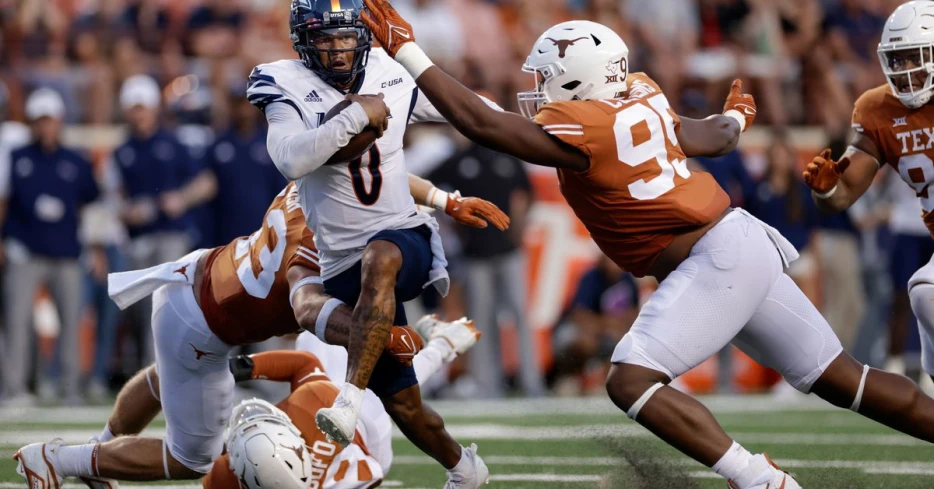
 Windy City Gridiron
Windy City Gridiron
Which college programs on their own could do the best job of answering the needs of the Chicago Bears?
Mock Drafts are inherently artificial, but one thing that they do well is allow fans to get to learn about prospects they might not have seen. In this case, though, I also wanted to explore a tool that seems slightly less popular than the conventional mock draft simulator, and that’s the ESPN Analytics Draft Simulator. What’s interesting about this tool is that while it allows trades, it does not offer them to the user. Instead, the user needs to propose a reasonable trade package. Additionally, it offers ESPN’s estimation for how likely it is that a given player will actually fall to a given point in the draft.
The rules for these Chicago Bears mock drafts were simple. I was only allowed to draft players from a single school in each draft, and I was only allowed a single trade down and a single trade up. I could only spend future draft capital (including picks 148 and after) if I made up for it with another trade (for example, I could spend a 2026 R3 if I had already collected a 2026 R2 from another team). The presumption is that after the first three rounds are over, a sane general manager would take over and use picks 148, 233, and 240 to fill any major holes that I had left.
In the interest of full disclosure, I started with a pool of eight schools, but I could not put together a “three-round draft” worth sharing for four of them.
It’s a sign of how the balance of power has shifted in college football that this is the only SEC team that made it into my final pool. It begins with a trade down that allows the Indianapolis Colts to select a tight end, in this case, Tyler Warren.
10) Trade - 10+72 traded to the Indianapolis Colts for 14 + 45; Colts selected Tyler Warren. The Colts technically overpay by about 2% in this trade, but I think the computer was correct to accept the deal.
14) Jahdae Barron DB (62%) - The simulator says that there’s still a better-than-even chance that Barron will be there at 14, but I personally have seen him go in the 14-16 range on previous run-throughs of the simulator, so it seems like a close call. To me, he’s one of the few clear R1 players in this draft, and even if corner is not a need for Chicago and he replicates many of the things that Kyler Gordon does, corners are only getting more expensive and Barron has the potential to become an impact safety in a Dennis Allen system.
15) Trade - 39+45 traded to the Atlanta Falcons for 15. The system gave me a 9% discount, but in other attempts to trade it would not allow me to offer 39 and 41 and receive any value back, and I never...